Dame's Rocket, Damask Violet, Night-scented Gilliflower, Queen's Gilliflower, Mother-of-the-evening, Summer Lilac - Hesperis matronalis
|
Hesperis matronalis - Dame's Rocket, Damask Violet, Night-scented Gilliflower, Queen's Gilliflower, Mother-of-the-evening, Summer Lilac. While Hesperis is a genus of about 25 species native to Europe, Asia, and Africa, only 1 species is found in North America. Hesperis matronalis was introduced from Europe in the early 1600s as an ornamental plant, and has since then spread across the continent except for a few southern states, and a few northern Canadian provinces. That spread is due to the prolific generation of seeds by the plant, and also by the inclusion of its seeds in wildflower seed mixes for gardeners. Demonstrating its continued spread, the USDA Plants Database map to the right is outdated; the plant is also now found in the wild in Alabama and Oklahoma. While so far it hasn't seemed to have an impact on native plants, its encroachment continues and caution should be exercised if you are considering growing it.
The scientific name of Hesperis - Greek for evening - and matronalis - matron or mother - was probably determined from one of the common names for this plant - Mother-of-the-evening, which was probably given because the scent of the flowers is more prevalent at that time of day. Whatever name you use, the leaves, oil, and seeds are reported to be edible (use caution, your own judgement, and do NOT rely on this page to determine edibility).
Found in:
AK, AL, AR, CA, CO, CT, DC, DE, GA, IA, ID, IL, IN, KS, KY, MA, MD, ME, MI, MN, MO, MT, NC, ND, NE, NH, NJ, NM, NV, NY, OH, OK, OR, PA, RI, SD, TN, UT, VA, VT, WA, WI, WV, WY | 
Distribution of Hesperis matronalis in the United States and Canada:
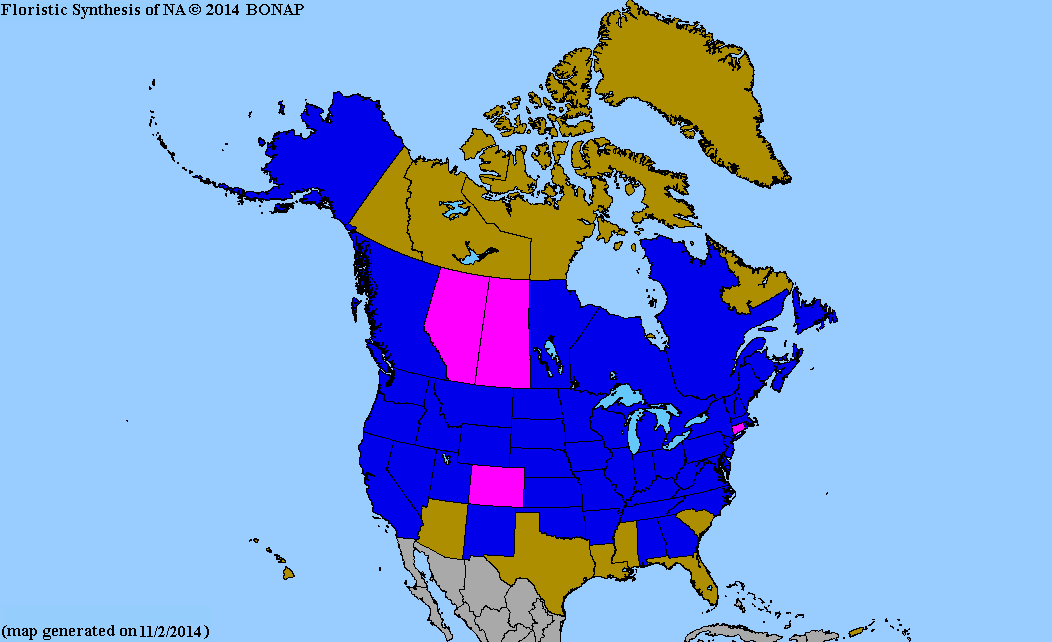
Map courtesy of The Biota of North America Program.
Map color key
Search Our Database: Enter any portion of the Scientific, Common Name, or both.
Do a general Google search of the entire site:
#ad
 Follow USWildflowers on Twitter
#ad
| | Site: John C. Wilson Park, Hamilton County, TN Date: 2017-April-22 | Photographer: Gerald C. Williamson
Nikon D7000
Tamron SP 90MM f/2.8 AF Macro | | Dame's Rocket was imported to North America as a garden plant because it is attractive and has a relatively long flowering period of 4 to 6 weeks. The several to many purple, pink, or white flowers are in a raceme which elongates during the flowering period. | | 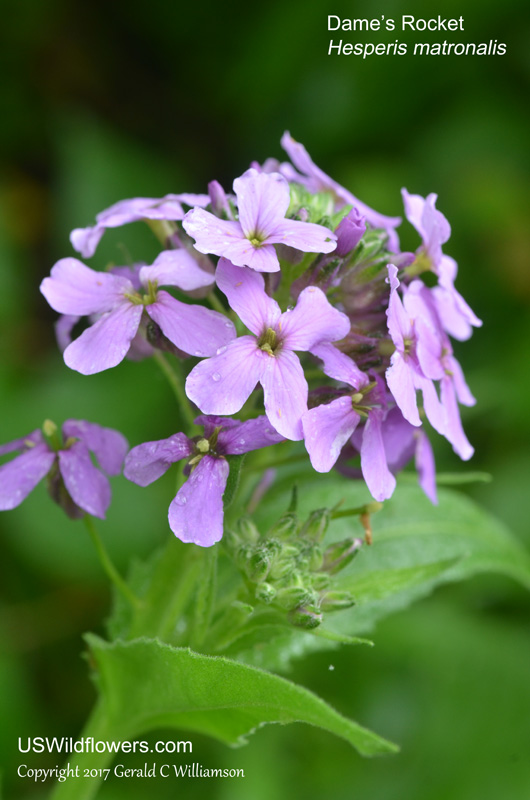
| | Site: John C. Wilson Park, Hamilton County, TN Date: 2017-April-22 | Photographer: Gerald C Williamson
Nikon D7000 | | Hesperis matronalis is unbranched near the base, but may branch several times in the upper half of the plant, with the branches terminating in an inflorescence. It grows to 2 to 4 feet high. Due to the general shape and color of the plant it is frequently confused with phlox, but phlox has 5 petals and opposite rather than alternate leaves. Dame's Rocket can also be confused with Money Plant (Lunaria annua), but Lunaria has cordate leaf bases and Hesperis has cuneate leaf bases. | | Click on the photo for a larger image
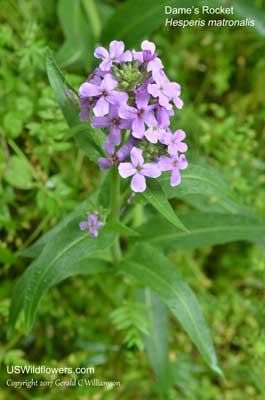
| | Site: John C. Wilson Park, Hamilton County, TN Date: 2017-April-22 | Photographer: Gerald C Williamson
Nikon D7000 | | The flowers of Dame's Rocket are up to an inch wide and have 4 petals and 4 sepals, with the sepals and petals alternating position around the flower. The sepals are in two pairs and may be hairy or glabrous. | | Click on the photo for a larger image
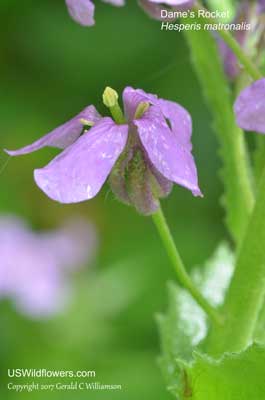
| | Site: John C. Wilson Park, Hamilton County, TN Date: 2017-April-22 | Photographer: Gerald C Williamson
Nikon D7000 | | The cauline (stem) leaves are on short petioles with a oblong, lanceolate, or ovate blade. The blade margins are toothed or entire, or as shown here, toothed in part and entire in the other. | | Click on the photo for a larger image
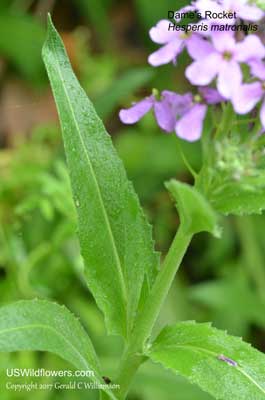
| | Site: John C. Wilson Park, Hamilton County, TN Date: 2017-April-22 | Photographer: Gerald C Williamson
Nikon D7000 | | The first year plant of Hesperis matronalis is a rosette of basal leaves, which is also how the 2nd-year and later flowering plants will start in the spring. The basal leaves, which are on long petioles and may be entire or toothed, or even lobed, wither by anthesis (flowering period). | | Click on the photo for a larger image
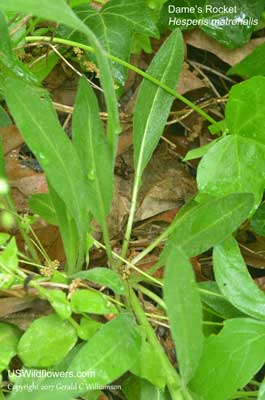
|
References used for identification and information:
|
|
| |
| #ad
|
|







